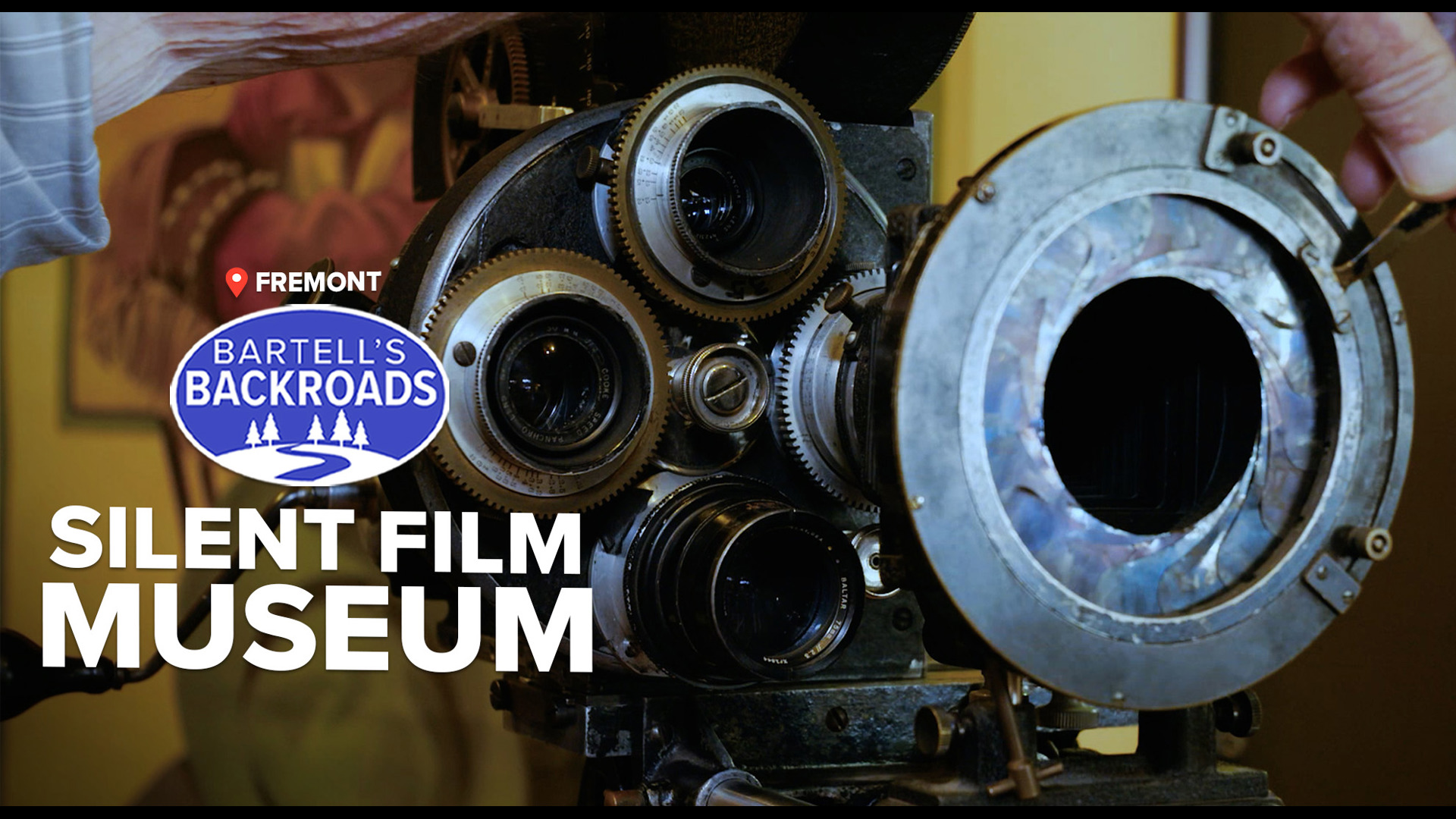PLUMAS COUNTY, Calif. — When the transcontinental railroad was completed in 1869, the Union Pacific and Central Pacific railroad companies discovered a major flaw in the route over the High Sierra. The rails over Donner Pass are about twice as steep as most railroad tracks and take significantly more fuel to climb.
A solution to the problem came in 1909 after the Western Pacific Railroad bypassed the High Sierra and built a less steep route through the Feather River Canyon in Plumas and Butte Counties.
Chris Skow is no stranger to the Feather River Canyon. The retired railroad conductor rode the tracks for most his life. After retiring, he settled down in Plumas County and started a museum and train excursion company.
“Photographing railroads has been a passion of mine and I really enjoy sharing my knowledge,” said Skow.
Train enthusiasts and railfans from all over the world come to Plumas County to catch a glimpse of what Skow calls the Seven Railroad Wonders of the Feather River Canyon. It’s a series of tunnels, bridges and engineering feats starting at Reno Junction.
► See John's map showing all story locations HERE


- Chilcoot Tunnel: Entering and exiting the Feather River Canyon is the Chilcoot Tunnel. The 6,002-foot-long passageway either takes locomotives west into the Sierra, or east to the Nevada Desert.
“It is the lowest natural pass in the entire High Sierra mountain range,” said Skow.

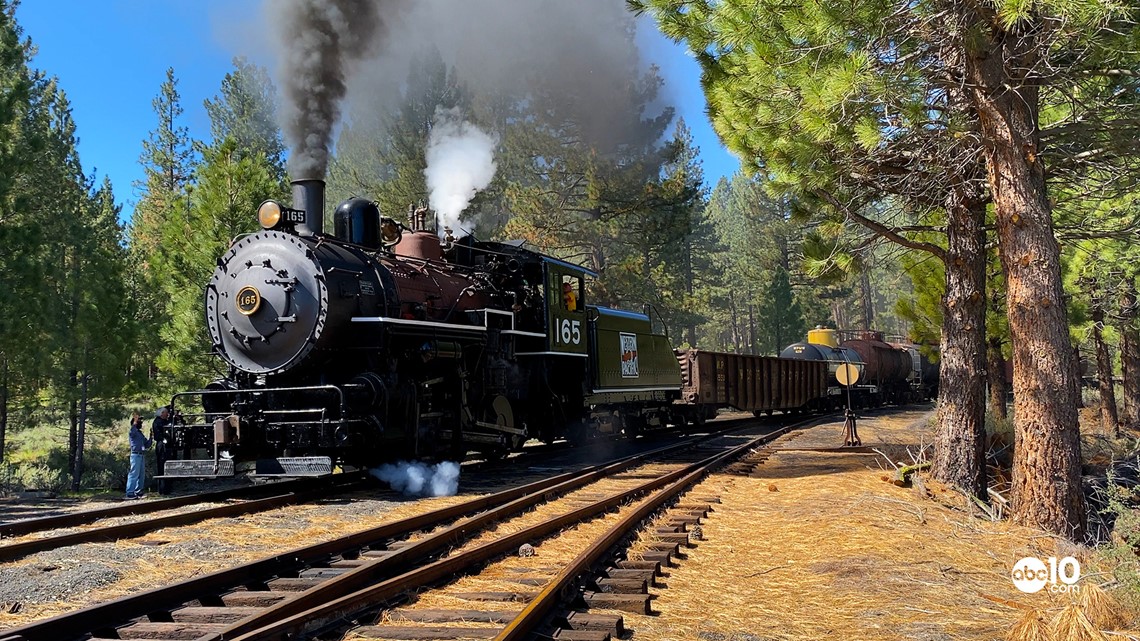
- Portola: 20 miles west of the Chilcoot Tunnel is Portola. This railroad town is a hub and change station for passing locomotives. Home to the Western Pacific Railroad Museum, railfans come here to ride working locomotives and view relics from the Feather River Canyon's past. It’s also one of the only places in the nation where the general public has the opportunity to operate a real locomotive, like the rotary snow plow.

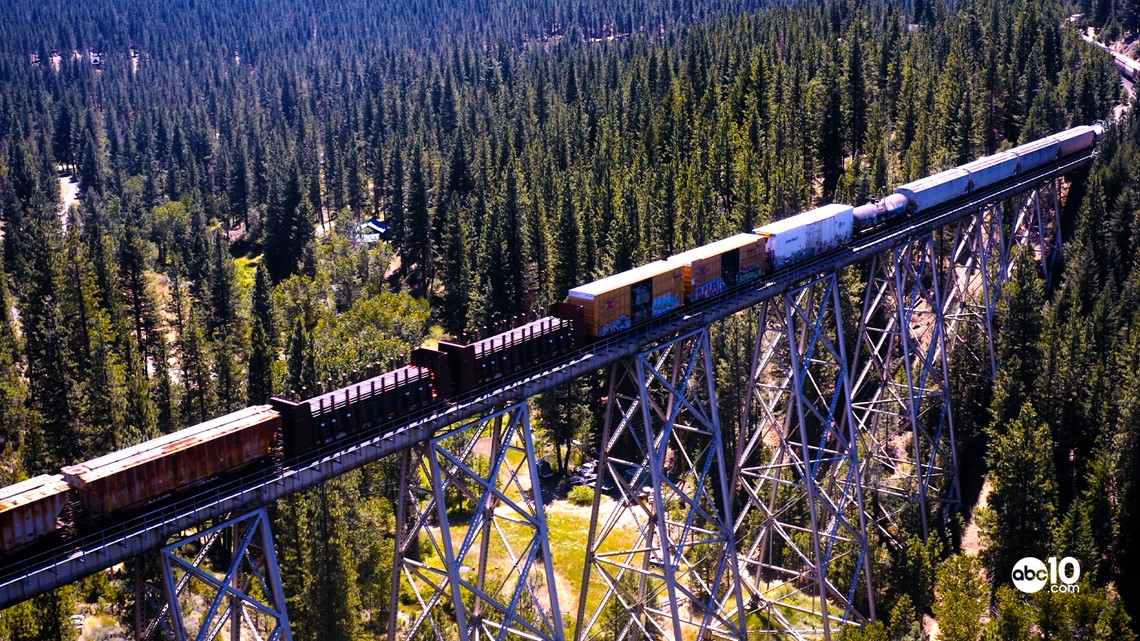
- Clio Trestle : Heading southwest of Portola towards the town of Graeagle, locomotives cross over the Clio Bridge, a tremendous 1,005-foot-long steel trestle which stands more than 170 feet over Willow Creek. One rare photo shared with ABC10 by the McDonald and Lundblade families shows a train crossing the trestle in 1912.

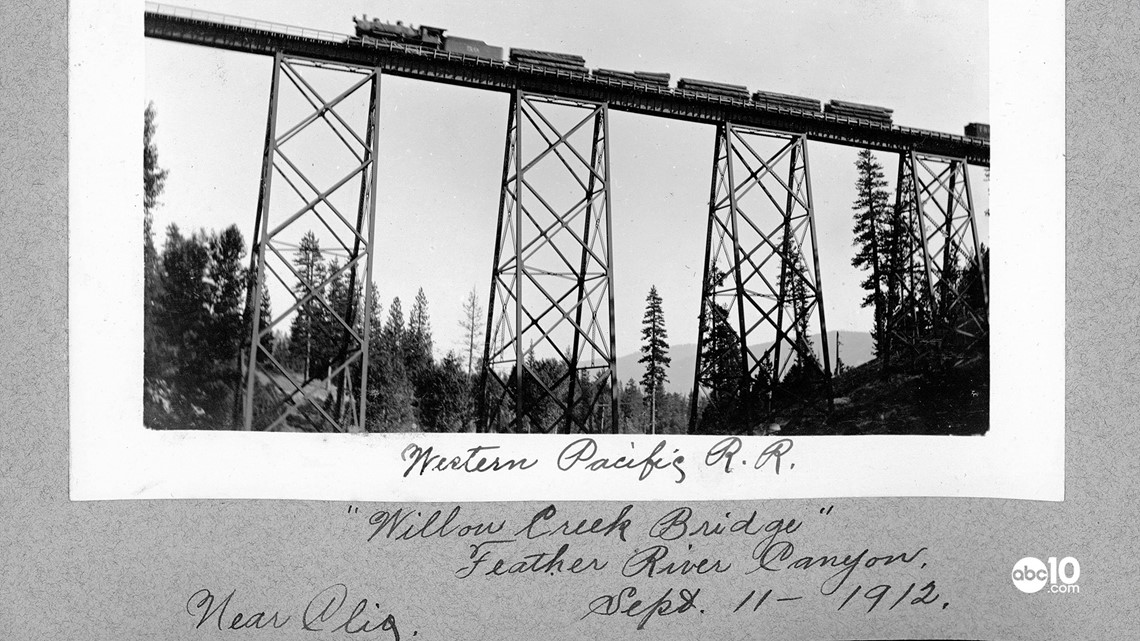
“You can look at the bottom of it and see the old right of way to the Sierra Valley Railway,” said Skow.


- Williams Loop: 19 miles Northwest of the Clio Bridge is one of Feather River Canyon’s most unique engineering innovations, the Williams Loop. In order to get over a steep hill and keep the tracks at a 1% grade, builders looped one mile of track over itself much like a spiral staircase.
“I would get off here on the upper part of the loop and slowly walk down the stairs to the lower part, and let my train go around the loop and catch the caboose on the lower part,” said Skow.
The only other loop like this one in California is the Tehachapi Loop, located just outside of Bakersfield.

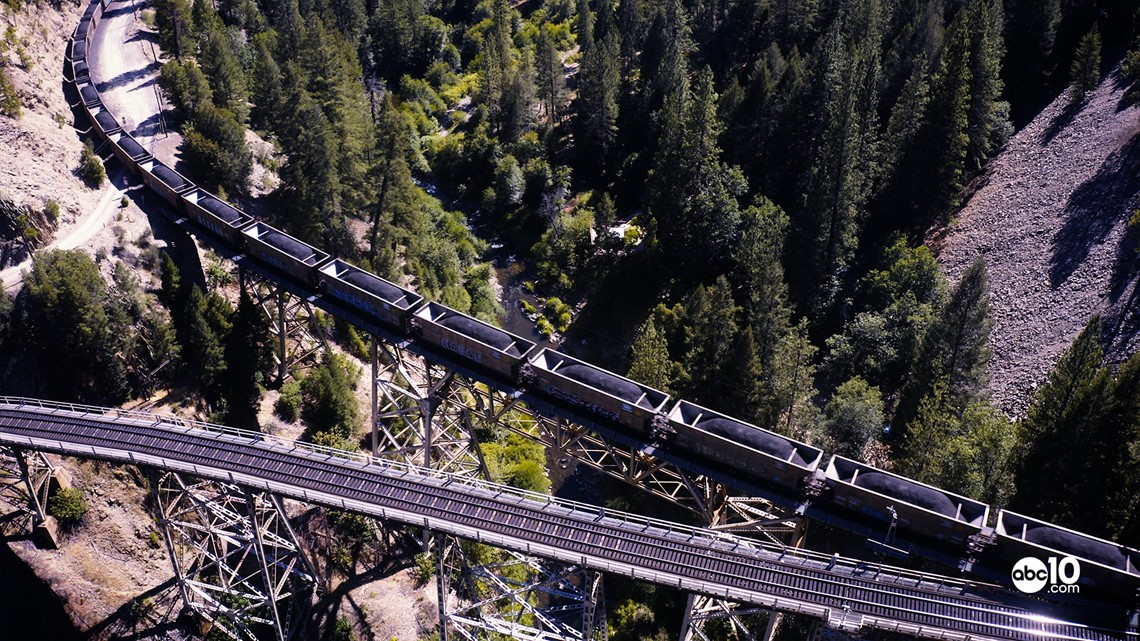
- Keddie Wye: Northwest of the Williams Loop is the Keddie Wye. It’s the only railroad wye in the world with two tracks merging over a canyon and entering a tunnel. The trestle is located high above Spanish Creek and below is the Keddie Resort which has one of the best views of bridge.
“This is the most famous railfan location in the world,” said Skow. “In 1909, the golden spike was pounded on this bridge to officially open the Western Pacific."


- BONUS: Honeymoon Tunnel: Rock Creek Reservoir is not necessarily one of the Seven Wonders of the Feather River Canyon, but to the east of Highway 70 is Honeymoon Tunnel, which makes for a particularly interesting picture as the train snakes through two tunnels showing itself in the middle. “The two tunnels are so close together it is like they are kissing, thus, it’s the honeymoon,” said Skow.
TAKE A TRIP ON BARTELL'S BACKROADS:
► See an interactive map of everywhere John has visited on the backroads
► Watch all of the Backroads videos
► Follow John on Facebook

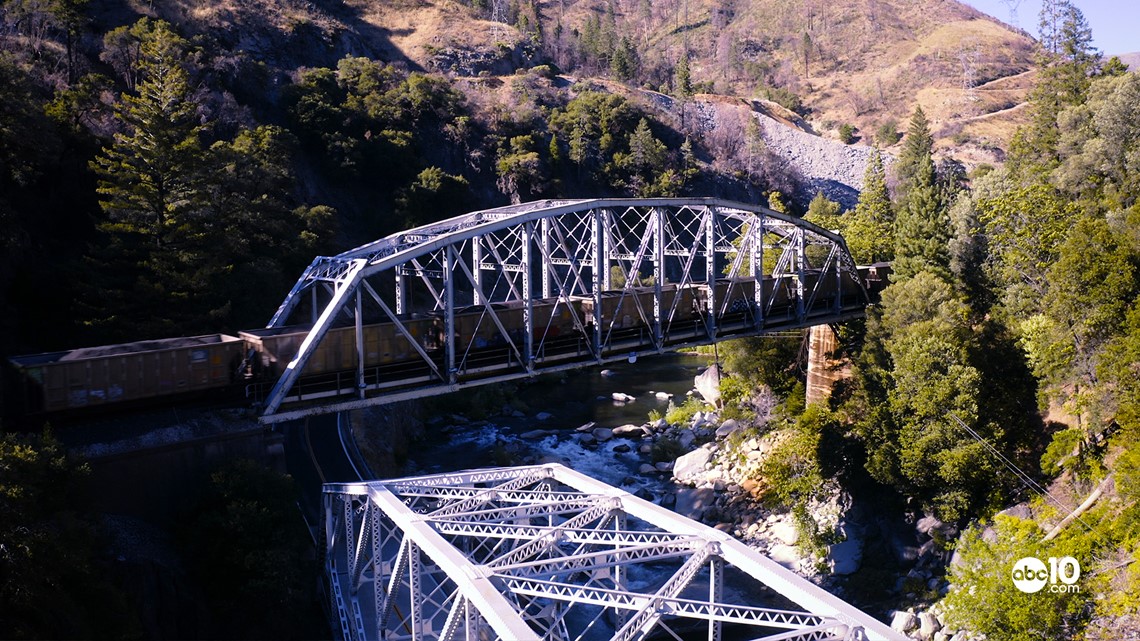
- Tobin Bridges “Two Bridges”: Just south of Rock Creek Reservoir, the railroad crosses over Highway 70 and the Feather River at the Tobin Bridges. “It turns out it was a very tight area so they had to stack the bridges on top of each other,” said Skow. The railroad bridge was built first in 1910 then came the Highway 70 bridge in 1936. Locals say it is good luck if a train crosses over your car.

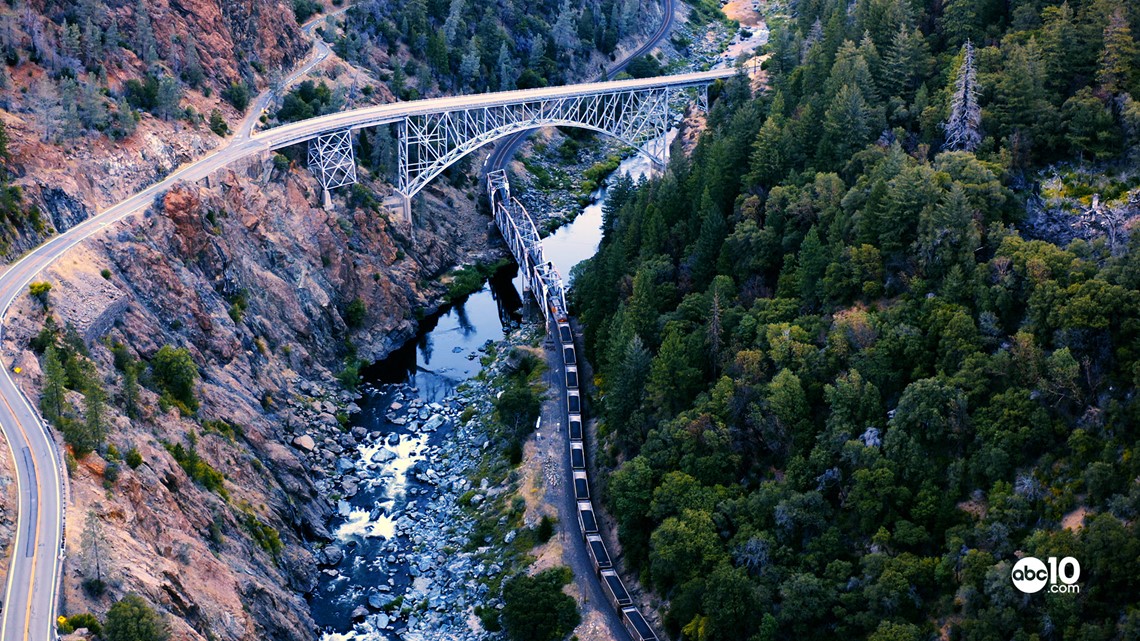
- Pulga Bridges: The 7 railroad wonder in the Feather River Canyon is the Pulga Bridges. Located just over the Plumas County line in Butte County, the highway bridge spans 680 feet across the canyon and 200 feet above the railroad. It’s a magnificent sight and wonderful way to end this journey. “This was a major undertaking by the state of California to complete highway 70.”
For more information on how to tour the 7 Railroad Wonders of the Feather River Canyon visit Chris Skow’s website https://www.traintrips.biz or get more info at the Explore Plumas County
WATCH MORE BACKROADS: Wine Country's Waterwheel | Bartell's Backroads





















